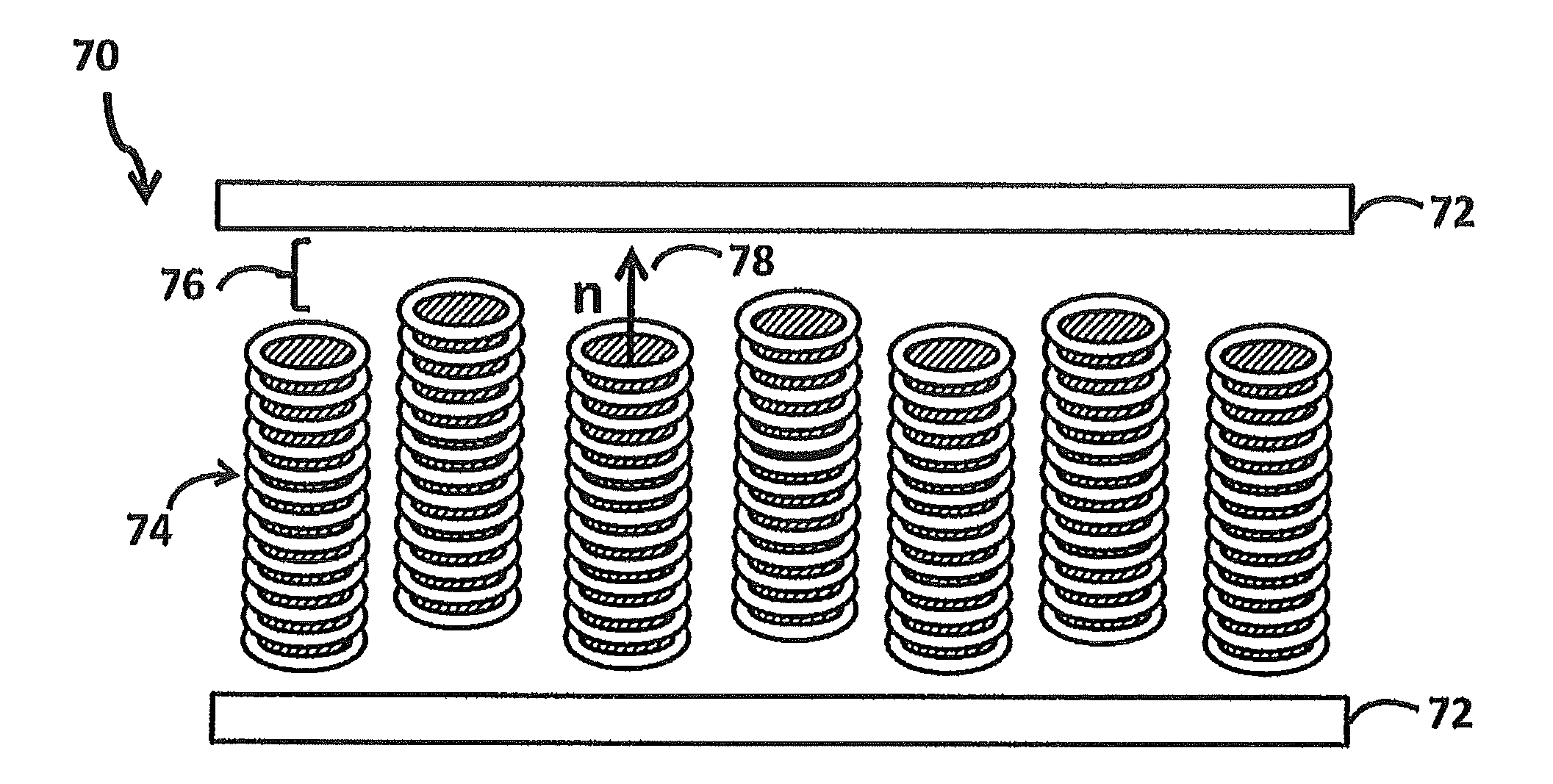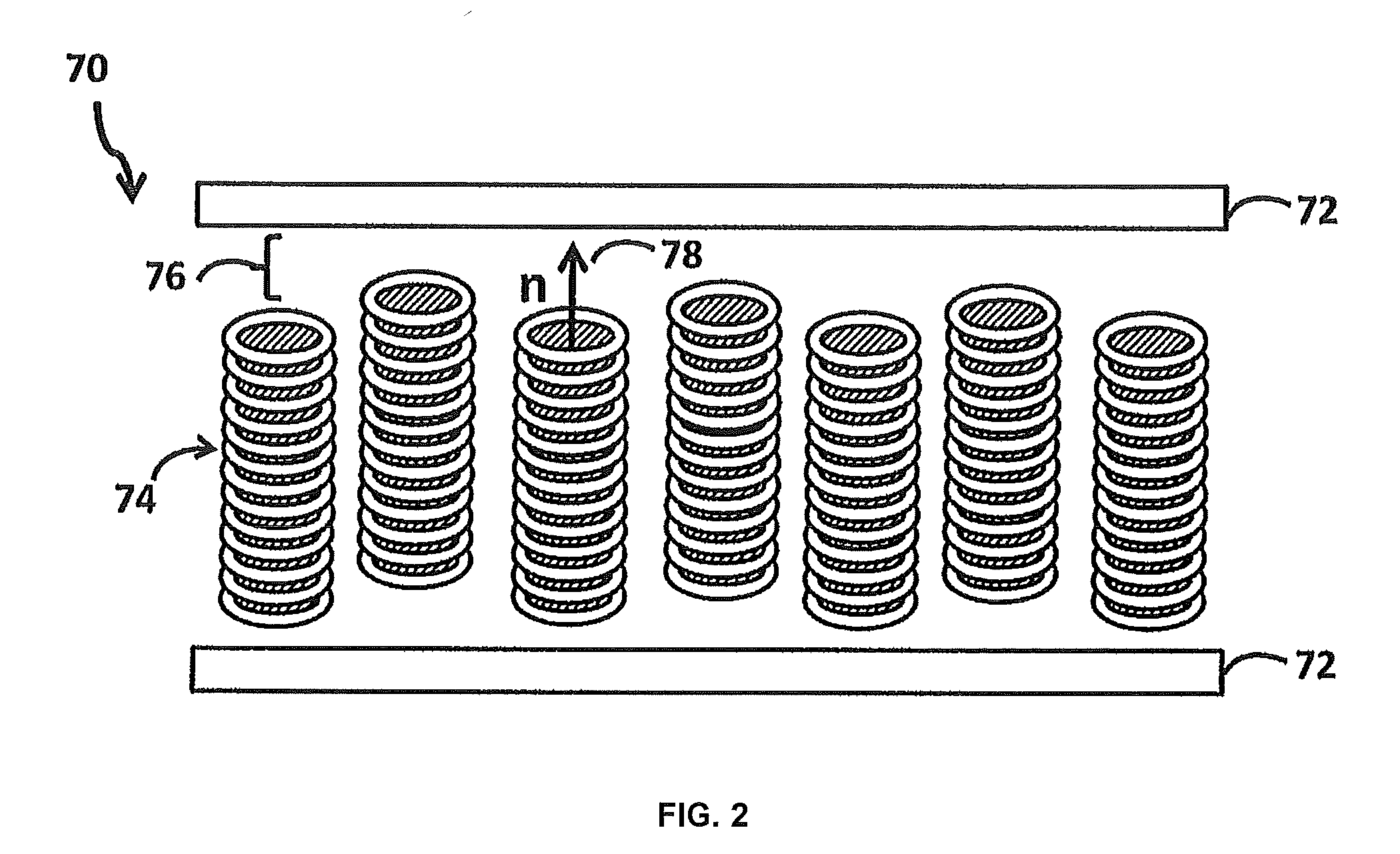System and Method for Detecting Pathogens on Treated and Untreated Substrates Using Liquid Crystal Chromonic Azo Dye
a technology of chromonic azo dye and liquid crystal chromonic azo dye, which is applied in the field of detection of pathogens and other toxic substances, can solve the problems of harming the detected biological species and toxic materials of biological materials, and achieve the effect of stable under manipulation and applied pressur
- Summary
- Abstract
- Description
- Claims
- Application Information
AI Technical Summary
Benefits of technology
Problems solved by technology
Method used
Image
Examples
example 1
Homeotropic Alignment on Zeonex Plastic Substrates
[0034]To make a cell of LCLC comprised of Water solutions of chromonic azo dye, two Zeonex 350R plates are cut to size, and assembled to create a cell with thickness controlled by glass spacers. A nematic water solution of chromonic azo dye is injected in the cassette at room temperature using positive pressure. After relaxation of transient stripe textures due to flow induced planar alignment, the LCLC spontaneously orients homeotropically on the uncoated substrates. These substrates proved to be suitable in aligning the chromonic azo dye in a homeotropic fashion, which is appropriate for applications such as the detection and amplification of ligands.
example 2
Homeotropic Alignment on Apel APL5015ML Plastic Substrates
[0035]To make a cell of LCLC comprised of Water solutions of chromonic azo dye, two Apel APL5015ML plates are cut to size, and assembled to create a cell with thickness controlled by glass spacers. A nematic water solution of chromonic azo dye is injected in the cassette at room temperature using positive pressure. After relaxation of transient stripe textures due to flow induced planar alignment, the LCLC spontaneously orients homeotropically on the uncoated substrates. These substrates proved to be suitable in aligning the chromonic azo dye in a homeotropic fashion, which is appropriate for applications such as the detection and amplification of ligands.
example 3
Homeotropic Alignment on Zeonor Films
[0036]To make a cell of LCLC comprised of Water solutions of chromonic azo dye, Zeonor films are laminated on glass, and assembled to create a cell with thickness controlled by glass spacers. A nematic water solution of chromonic azo dye is injected in the cassette at room temperature using positive pressure. After relaxation of a transient stripe textures due to flow induced planar alignment, the LCLC spontaneously orients homeotropically on the laminated films. These substrates proved to be suitable in aligning the chromonic azo dye in a homeotropic fashion, which is appropriate for applications such as the detection and amplification of ligands.
PUM
 Login to View More
Login to View More Abstract
Description
Claims
Application Information
 Login to View More
Login to View More - R&D
- Intellectual Property
- Life Sciences
- Materials
- Tech Scout
- Unparalleled Data Quality
- Higher Quality Content
- 60% Fewer Hallucinations
Browse by: Latest US Patents, China's latest patents, Technical Efficacy Thesaurus, Application Domain, Technology Topic, Popular Technical Reports.
© 2025 PatSnap. All rights reserved.Legal|Privacy policy|Modern Slavery Act Transparency Statement|Sitemap|About US| Contact US: help@patsnap.com



